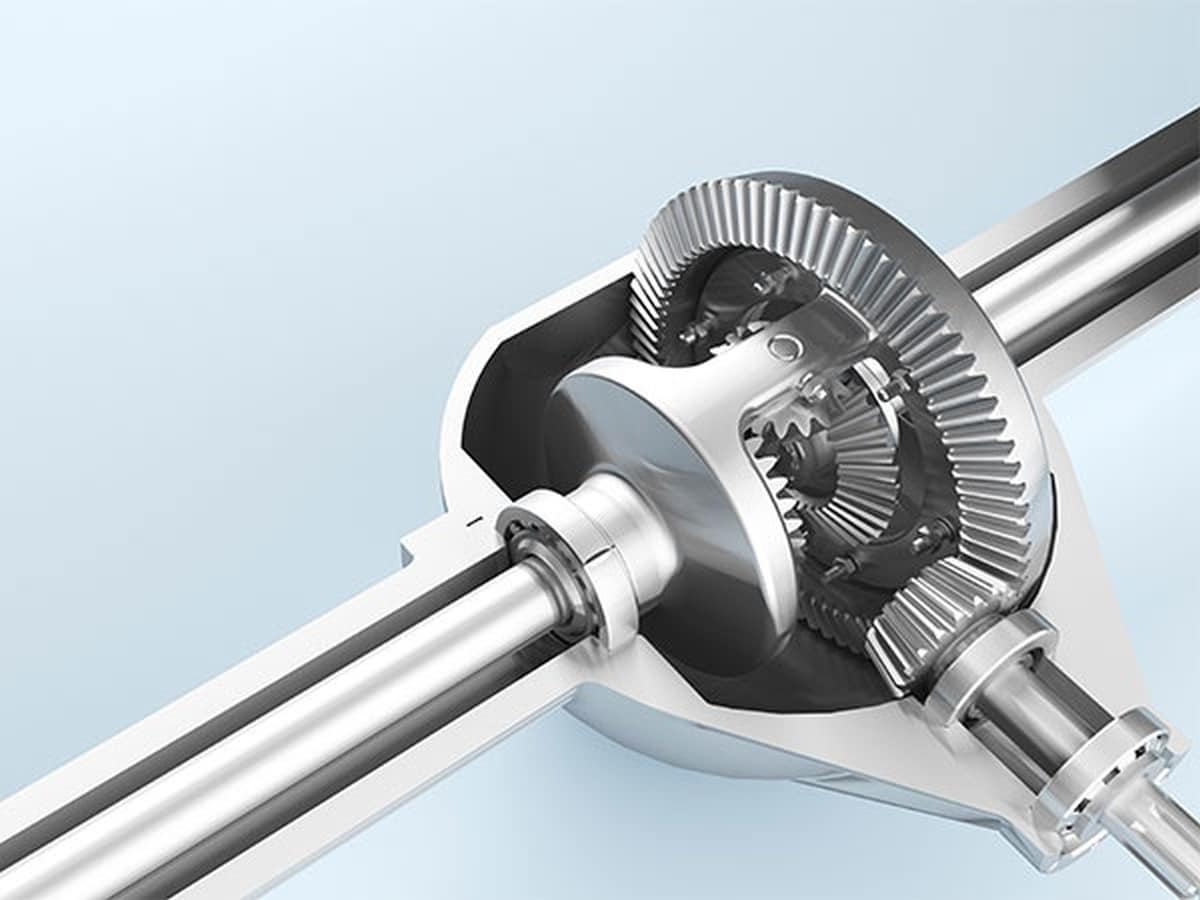Many people hear the word differential and think of 4WD/AWD vehicles but what is a differential on a car/truck? How does it work, are there different types, what is a gear ratio, is it the same as a transfer case? Most importantly, how you should maintain it and how can you tell if it is failing. Keep reading to find out!
DIFFERENTIALS ROLE IN THE DRIVETRAIN
Differentials receive power from the driveshaft and deliver it to the wheels. A differential consists of many different components. The driveshaft typically connects to the pinion shaft/gear through a universal joint, the pinion gear spins a much larger ring gear, attached to the ring gear are two parallel spider gears that then attach to side gears that are at the end of the two axles. The axles then attach to your hub, which is the piece that connects to your wheel. All of these things together allow the wheels to spin at different speeds and are pivotal in turning.
When you make a turn, one of the wheels on your differential must turn sharper than the other and therefore it is necessary the differential has the ability to allow the wheels to spin at different speeds.
TYPES OF DIFFERENTIALS
- Open Differentials
There are open differentials, which are the most common type coming from the manufacturer. An open differential splits the torque equally to both wheels. When a tire loses traction, less torque is applied to both wheels until traction is established again. These are good for everyday vehicles because it allows the wheels to spin at different speeds and helps in ensuring smooth turning. - Limited Slip Differentials
A limited slip differential functions primarily as an open differential, the only difference is it has an additional component, being a set of clutch plates, a more complex differential gear train or a special viscous fluid. One of these three components senses when a wheel loses traction and will send torque to both wheels instead of one to regain traction. - Locking Differentials
A locking differential is similar to both of these previous differentials, the only difference being that the user is able to select whether the drive train is open or locked. This feature is great to turn on when you are in situations where you need more traction like in sand, snow, dirt or mud but can be a problem when on a hard surface. When the vehicle is locked and goes into a turn both wheels are trying to spin at the exact same speed, this is impossible because one of the wheels is taking a shorter path. This complication can lead to things such as axles snapping because the grip friction between the tire and the pavement wont allow the wheels to spin at different speeds and the torque is then transferred to the weakest components, typically being the axle. - Torque Vectoring Differentials
The last type of differential is the torque-vectoring differential. This is the most complex form of differential and it consists of extra gear trains and a lot of sensors and computers that control precisely how much torque is given to each wheel. Whereas in other vehicles, there’s only a mechanical aspect as to what controls the torque change. These are typically found in high end luxury sports sedans or crossovers such as Audi, Lexus and BMW. These are not used in most vehicles because of the cost to produce them and the complexity of the system itself.
GEAR RATIO
A differential gear ratio is the difference between the number of teeth on the ring gear and the pinion gear. If your ring gear has 41 teeth and your pinion gear has 11 teeth (pinion gears are always smaller) than your gear ratio would be 41/11 or 3.73. This means that the driveshaft (remember the driveshaft is directly connected to the pinion gear via u-joint) would have to spin 3.73 revolutions for the wheels to turn 1 revolution. This seemingly complex system allows manufacturers to control torque/acceleration and top speed capabilities based on the car’s functional purposes. The higher the gear ratio (e.g. 5.13), the more the driveshafts have to spin to turn the wheels. This is great for vehicles that need more torque such as trucks because it raises their towing capacity. A higher gear ratio typically consists of parts made from more durable materials as well, which helps ensure keeping work vehicles on the road. A lower gear ratio (e.g. 3.73) makes the driveshaft have to spin less to achieve more rotations at the wheel, this is good for smaller cars that don’t need as much torque or power distributed to the wheels. These cars are more fuel efficient and better for highway use.

